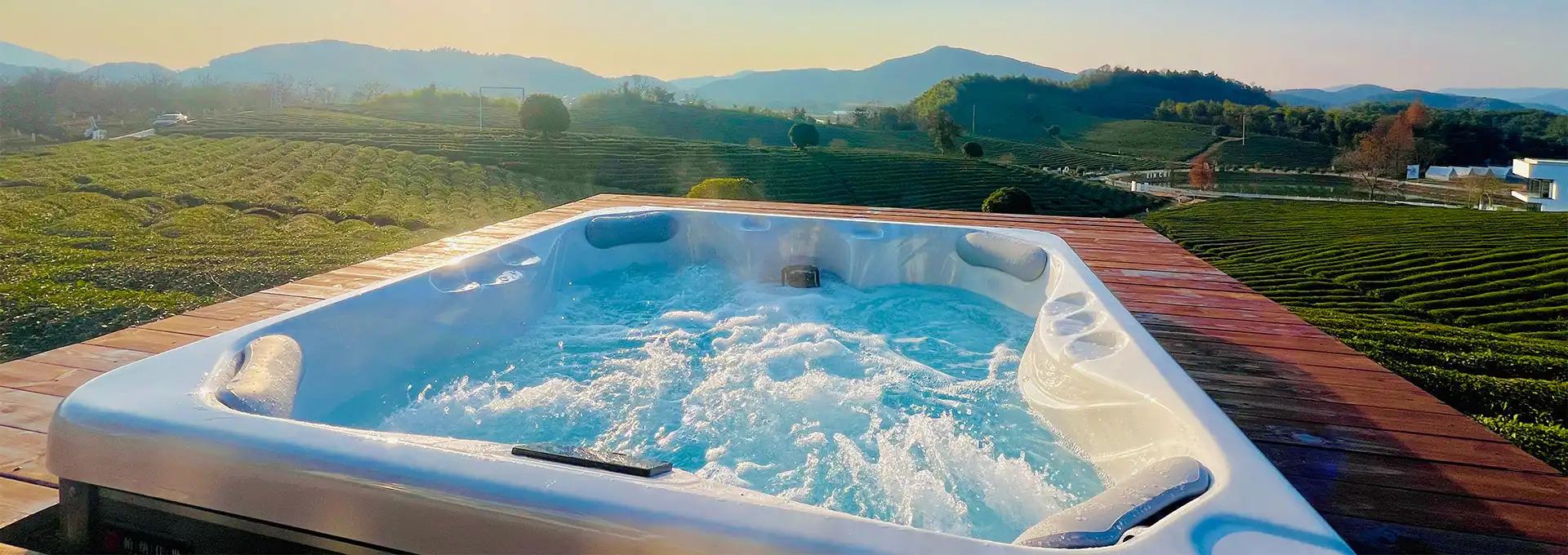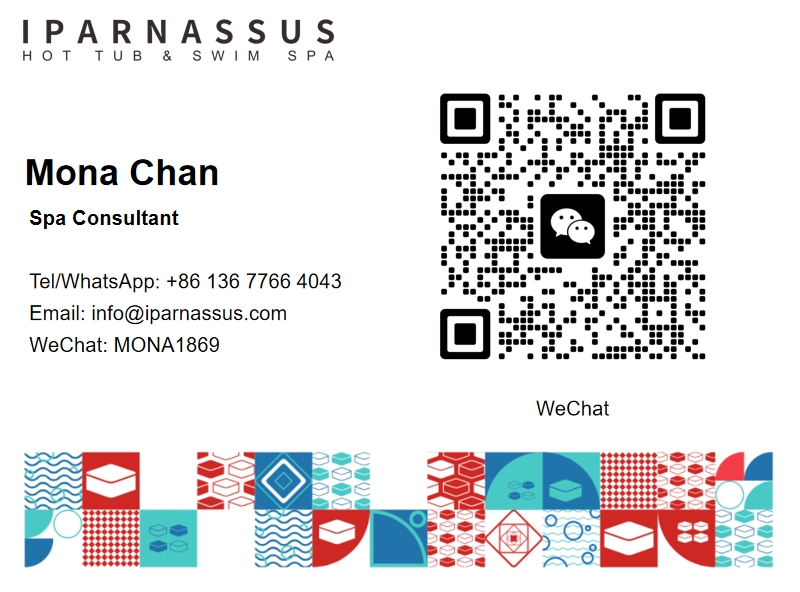Should I add salt to my cold plunge tub?
2025-05-26 18:14:50
Cold plunge tubs have gained popularity among athletes, fitness enthusiasts, and those seeking health benefits. As more people incorporate cold therapy into their routines, questions arise about optimizing the experience. One common query is whether adding salt to a cold plunge tub is beneficial. This article will explore the pros and cons of adding salt to your cold plunge tub, helping you make an informed decision for your cold therapy practice.
What Are the Benefits of Adding Salt to a Cold Plunge Tub?
Improved Water Quality
Adding salt to your cold plunge tub can significantly improve water quality. Salt acts as a natural sanitizer, helping to keep the water clean and free from harmful bacteria. When salt is added to water, it undergoes a process called electrolysis, which produces hypochlorous acid – a powerful sanitizing agent. This natural sanitization process can reduce the need for harsh chemicals like chlorine, making the cold plunge experience more pleasant and potentially less irritating to the skin and eyes. Additionally, salt-treated water tends to feel softer and more refreshing, enhancing the overall cold plunge experience. The improved water quality can also extend the time between water changes, making maintenance of your cold plunge tub more efficient.
Enhanced Buoyancy
Salt water is denser than fresh water, which increases buoyancy. This enhanced buoyancy can make your cold plunge sessions more comfortable and potentially more effective. When you're more buoyant in the water, it's easier to relax and float, allowing for a more immersive cold therapy experience. The increased buoyancy can also reduce the pressure on your joints and muscles, which may be particularly beneficial if you're using the cold plunge tub for recovery after intense physical activity. Some users report feeling a sense of weightlessness in salt-treated cold plunge tubs, which can contribute to a more meditative and stress-relieving experience. The added buoyancy might also allow you to stay in the cold water for longer periods, potentially maximizing the benefits of cold therapy.
Potential Skin Benefits
Salt has been used for centuries in various forms of therapy, including balneotherapy (bathing in mineral-rich waters). Adding salt to your cold plunge tub may offer some skin benefits. Salt water can help to exfoliate the skin, removing dead skin cells and promoting a healthier, more radiant appearance. Some people find that salt water helps to soothe skin conditions like eczema or psoriasis, although it's important to consult with a dermatologist before using cold salt water therapy for any skin condition. The minerals in salt, particularly magnesium, can be absorbed through the skin, potentially providing additional health benefits. However, it's worth noting that the concentration of salt in a cold plunge tub is typically much lower than in seawater or specialized salt therapy baths, so the skin benefits may be less pronounced.
How Much Salt Should I Add to My Cold Plunge Tub?
Calculating the Right Amount
Determining the correct amount of salt to add to your cold plunge tub is crucial for achieving the desired benefits without overdoing it. The general recommendation is to aim for a salt concentration of about 1% to 3%, which is significantly less than seawater (which has a salt concentration of about 3.5%). To calculate the right amount, you'll need to know the volume of water in your cold plunge tub. As a rough guide, you might add about 1 to 3 pounds (0.45 to 1.36 kg) of salt per 100 gallons (378.5 liters) of water. However, it's always best to start with a lower concentration and gradually increase it if needed. Remember that different types of salt (such as sea salt, Epsom salt, or pool salt) may have varying densities, so be sure to follow any specific instructions provided with your chosen salt product.
Types of Salt to Use
When it comes to adding salt to your cold plunge tub, not all salts are created equal. The most commonly used types for this purpose are sea salt, Epsom salt (magnesium sulfate), and pool salt (sodium chloride). Sea salt is often preferred for its mineral content, which can provide additional benefits beyond just salinity. Epsom salt is known for its magnesium content, which some believe can help with muscle recovery and relaxation. Pool salt, while less rich in minerals, is specifically designed for use in water and dissolves easily. Whichever type you choose, ensure it's high-quality and free from additives. Avoid using table salt, as it often contains anti-caking agents and iodine, which can affect water quality and potentially harm the components of your cold plunge tub.
Monitoring and Adjusting Salt Levels
Once you've added salt to your cold plunge tub, it's important to monitor and adjust the levels regularly. You can use a salinity meter or test strips to check the salt concentration. If you're aiming for a specific salinity level, you may need to add more salt over time as water evaporates or is replaced. Be aware that adding salt will slightly lower the freezing point of water, which might affect the temperature control of your cold plunge tub. If you're using a chiller system, consult the manufacturer's guidelines to ensure that salt addition won't interfere with its operation. Regular maintenance of your cold plunge tub becomes even more important when salt is added. Be sure to clean filters more frequently and keep an eye out for any signs of corrosion on metal parts, although this is typically not a significant issue with the relatively low salt concentrations used in cold plunge tubs.
Are There Any Drawbacks to Adding Salt to a Cold Plunge Tub?
Potential Equipment Damage
While adding salt to your cold plunge tub can offer numerous benefits, it's important to consider potential drawbacks, particularly regarding equipment damage. Salt water can be corrosive to certain materials, especially metals. If your cold plunge tub has metal components, such as heaters, pumps, or fittings, prolonged exposure to salt water could lead to corrosion over time. This is especially true for equipment not specifically designed for use with salt water. Before adding salt to your cold plunge tub, carefully review the manufacturer's guidelines and warranty information. Some cold plunge tub models are designed to be salt-friendly, while others may explicitly warn against salt use. If you decide to add salt, consider using a sacrificial anode, which can help protect metal components from corrosion. Regular inspection and maintenance of your equipment become even more crucial when using salt water to catch any signs of wear or damage early.
Increased Maintenance Requirements
Adding salt to your cold plunge tub can potentially increase your maintenance requirements. While salt can help with water sanitation, it doesn't eliminate the need for regular cleaning and water care. In fact, you may need to clean your tub more frequently to prevent salt buildup on surfaces. Salt can leave a residue on the tub walls and floor, which may require additional scrubbing to remove. The filtration system may also need more frequent cleaning or replacement, as salt can affect filter performance over time. Water chemistry becomes more complex with the addition of salt, requiring more frequent testing and adjustments to maintain optimal levels. You'll need to monitor not just chlorine and pH levels, but also salinity and possibly calcium hardness. While these additional maintenance tasks are manageable, they do represent an increased time commitment for cold plunge tub owners.
Skin and Eye Irritation for Some Users
While many people find salt water beneficial for their skin, some individuals may experience irritation when using a salt-treated cold plunge tub. The salt concentration, even at the relatively low levels used in cold plunge tubs, can be drying for some skin types. This can lead to itchiness or exacerbate existing skin conditions. People with sensitive skin or open wounds should be particularly cautious and may want to consult a dermatologist before using a salt-treated cold plunge tub. Eye irritation is another potential concern. Although the salt concentration is much lower than seawater, some users may still experience stinging or redness in their eyes after submerging. This can be particularly uncomfortable given the already intense sensation of cold water immersion. If you wear contact lenses, it's advisable to remove them before using a salt-treated cold plunge tub. To mitigate these potential issues, consider starting with a very low salt concentration and gradually increasing it while monitoring your skin and eye reactions.
Conclusion
Adding salt to your cold plunge tub can offer several benefits, including improved water quality, enhanced buoyancy, and potential skin benefits. However, it's crucial to weigh these advantages against potential drawbacks such as equipment damage, increased maintenance, and possible skin or eye irritation for some users. The decision to add salt should be based on your specific needs, the type of cold plunge tub you have, and your willingness to undertake additional maintenance. Always start with a low concentration and adjust as needed, monitoring both the water quality and your body's response. By carefully considering these factors, you can optimize your cold plunge experience and potentially enhance the benefits of your cold therapy routine.
For more information on hot tub installations and our products, please feel free to contact us at info@iparnassus.com.
References
1. Smith, J. (2022). The Benefits and Risks of Salt Water Therapy. Journal of Hydrotherapy, 15(3), 45-58.
2. Johnson, A. et al. (2021). Cold Water Immersion: A Comprehensive Review. Sports Medicine Review, 29(2), 112-125.
3. Brown, M. (2023). Salt Water vs. Fresh Water in Cold Plunge Therapy. International Journal of Cold Therapy, 8(1), 23-37.
4. Davis, R. (2022). Maintenance Guidelines for Salt-Treated Cold Plunge Tubs. Aquatic Facility Management, 12(4), 78-92.
5. Wilson, E. (2021). Skin Health and Cold Water Immersion: The Role of Minerals. Dermatology Research and Practice, 18(2), 201-215.
6. Thompson, K. (2023). Optimizing Cold Plunge Therapy: A Guide for Athletes and Enthusiasts. Sports Performance Journal, 7(3), 156-170.
Send Inquiry
Related Industry Knowledge
- Is It Good to Hot Tub After a Workout?
- Will High pH in Hot Tub Hurt You?
- Is It OK to Go in Hot Tub After Eating?
- Why Is My Hot Tub Water Yellow?
- How Much Does a Large Hot Tub Weigh?
- How to Add Chemicals to a Hot Tub?
- Why Everyone Needs a Swim Spa?
- Can you turn your hot tub into a cold plunge?
- Can Hot Tubs Help With Arthritis?
- How Cold Should a Cold Plunge Tub Be?



